Having a solid understanding of Walmart pallet requirements is imperative if you ever want to be one of their vendors. With a yearly revenue that leaves even Amazon in the dust, Walmart is the biggest retailer in the world. Therefore, you don’t want to waste an opportunity to do business with them because you didn’t follow their pallet guidelines correctly.
Walmart pallet requirements dictate that pallets sent to them must be 40 inches by 48 inches with four-way access. The material the pallet is made out of can only be from wood and all pallets need to have the ISPM-15 seal of approval. Additionally, freight must be shipped on a Grocery Manufacturers Association Grade A Pallets.
There are many ins and outs to Walmart pallet requirements. In this article, we’ll walk you through the necessities so you can ensure your palletized shipments to Walmart won’t get rejected.
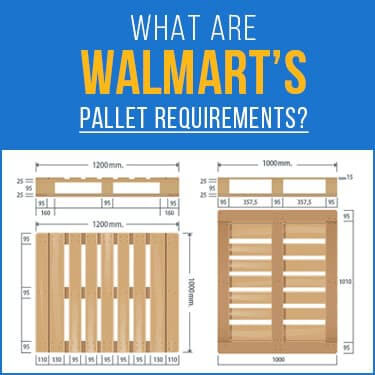
The requirements that Walmart has for inbound palletized freight are very specific. Walmart has these guidelines in place for safety reasons and to ensure the product is shipped safely. Not following their guidelines for palletized freight will result in your shipment being returned to you.
When you’re shipping palletized freight, you’re going to need to use a pallet with 40”x48” dimensions. Walmart is willing to make an exception to these dimension requirements if you’re freight cannot fit on a pallet with these dimensions.
Should you run into this problem, Walmart will allow you to use a pallet with a larger width. That said, there are no exceptions to the 48” length requirement. As far as boards go, pallets that are sent to Walmart need to have at least seven top boards and five bottom boards. Walmart pallet requirements also dictate that pallets sent to them need to have three stringers with four-way entry.
Walmart requires that all pallets sent to their distribution centers must be Grocery Manufacturers Association (GMA) Grade A pallets. The reason Walmart requires using these pallets is that they meet all of the minimum board, stringer, four-way entry and dimensions requirements they have.

Another requirement that you will have to follow when you send palletized freight to Walmart is the International Standards for Phytosanitary Measures No. 15 (ISPM-15). Numerous pests and diseases can live inside wooden materials like pallets.
To solve this problem, ISPM-15 requires that wood packaging materials like pallets be heat treated to their core. The temperature used for heat treatment must be 56 degrees Celsius. A second option prescribed by ISPM-15 is fumigation with Methyl Bromide. After treatment is done, the pallet will receive a quality treatment mark.
Following ISPM-15 is a common pallet requirement, especially for international shipments.
If using wooden pallets isn’t your preference, Walmart allows you to use pallets made from other materials. This includes materials like plastic or metal. However, there is a chance that Walmart will require some proof that your pallets are structurally sound or request a fire rating. Regardless of the material you decide on, Walmart will not accept corrugated pallets under any circumstance.
Walmart doesn’t require that your pallets be in the most pristine condition. However, the pallets should be clean and not have any odor. By clean, Walmart means to say that pallets should not have debris stuck to them or stains. Discoloration from age, however, is completely fine.
There is something that you should be on the lookout for regarding the condition your pallets are in. Some simple pallet problems that are easy to spot include:
Another potential problem that you will need to be on the lookout for is nail heads or points. These parts of the nail can stick out, but they cannot stick out more than ⅛ of an inch. Similarly, pallets with splinters that are 3 inches or greater in length will be rejected.
Partial footings are not allowed by Walmart either. A partial footing can occur when one-fourth of the width or length of a stringer board that allows it to connect to the bottom board has been removed. Many other companies such as Costco have similar pallet requirements such as these.
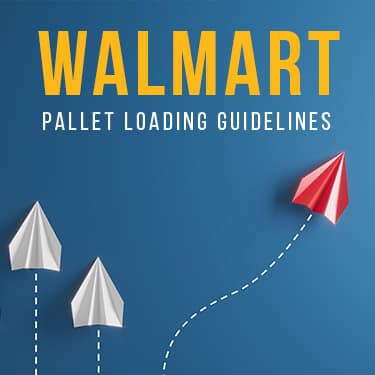
Now that you know what the pallet requirements are, you can learn the way Walmart wants you to load them. Just like their general pallet requirements, Walmart is particular about the way you load the palletized freight you send to them. Fortunately, their guidelines are pretty easy to follow.
Palletized freight that’s sent to Walmart must be within a certain height and a certain weight. Walmart will not accept pallets with a height over 96 inches and weight over 2,500 pounds. Pallets must be loaded using one of two unitized stacking methods.
The two methods of unitized stacking that you can utilize are column stacking and interlock stacking. Each of these two methods has its unique benefit, but determining which one you want to use is up to your discretion and the type of boxes you’re loading.
These two methods will prevent your stacked freight from having holes or layers of boxes that don’t have a rectangular shape. Palletized loads with these features will be rejected by Walmart.
Column stacking is when you stack boxes on top of one another. The boxes need to be properly aligned with one another for maximum effectiveness. Stacking boxes in this manner will give your palletized load extra strength against anything bouncing against it.
Your second option is to use the interlocking method. While column stacking might be the best method for giving your palletized load some added strength, interlocking will make the load more stable. This method of loading requires boxes to be arranged facing opposing directions.
There is also a third option that you can use when loading freight onto a pallet. This is called the hybrid stacking method. As you’ve probably guessed, hybrid stacking is when you utilize both columns and interlocking together. For example, you could have one layer of boxes stacked using the column method and leave the top row for interlocking. Or, you can do the same thing but in reverse.
When you double-stack pallets, you’ll need to consider a few safety protocols. First, you need to understand the difference between a lightweight pallet and a heavyweight pallet.
Lightweight pallets weigh 750 pounds or lower. Heavyweight pallets are 750 pounds or higher. Lightweight pallets can only support 1,500 pounds of weight on top of it.
For heavyweight pallets, they can withstand an additional 2,500 pounds. It’s important to note that single pallets cannot be over 2,500 pounds, but double-stacked ones can exceed this weight.
Walmart’s pallet requirements allow for the use of slip sheets, albeit, for certain circumstances. Slip sheets can be used for items approved by Walmart and what those items weigh before they cube out.
If you’re permitted to use slip sheets, they must have flaps that are 3 inches to 6 inches in length. Do not place the slip sheet flaps underneath the stretch wrap. Excluding the flaps, slip sheets will also need matching pallet dimensions of 48 inches by 40 inches.
The slip sheets you use should be made from solid fiber. That said, plastic slip sheets can be approved by a Walmart Inbound Quality Senior Manager.
Walmart permits the use of tier sheets in case you want to give your palletized load a little extra stability. Using tier sheets along with a hybridized stacking pattern will provide your shipment with stability while it’s being transported.
When using tier sheets, they must have no less than ½ of an inch of overhang on them. The surface of your chosen tier sheets should also be flat, free of any holes or perforations that go through the sheet itself.
Similarly to slip sheets, tier sheets need to be made from solid fiber or corrugated materials. Use of plastic tier sheets can be used if a Walmart Inbound Quality Senior Manager gives their approval.
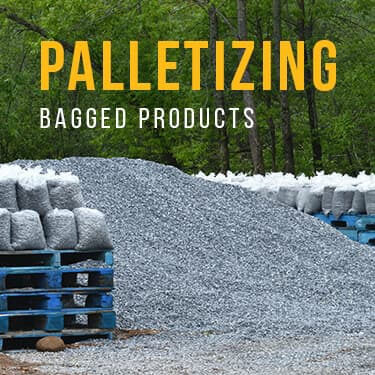
Palletizing bagged products is a little bit more difficult than standard boxes. However, Walmart has some requirements that will make this task easier. First, you will need a corrugated 4 inch tray that will be placed on the bottom of the pallet.
Then you will begin stacking the boxes using the interlocking method. When it comes to bagged products, the interlocking method is the best one to use because it provides the best stability. Also, using the column method is not permitted for pallets with bagged freight.
In the case of bagged products that need to be ventilated, Walmart makes an exception to using a 4 inch tray for bagged goods. Additionally, having a tray that is 4 inches tall for palletized bags is only a minimum. Therefore, you can use taller trays for your bagged items if necessary.
Pre-assembeled and corrugated displays are another tricky item to palletize. Walmart’s pallet requirements dictate that any displays you send will need to be protected by cardboard shrouds. These shrouds are thin, but still thicker than paper and will need to cover the entire display.
The shroud must fit firmly around the entirety of the display. To do this, take the height measurement of the display while it’s on the ground. You will then need to fit the cardboard shroud to whatever this height is.
The reason the shroud must be tightly fit around the display is to minimize air space. If there’s too much air-spaced between the shroud and display, it’s possible that a collapse could occur.
Maximizing the protection you give your display is essential, but you also make sure that the shroud protecting the display doesn’t cover the pallet jack openings on the pallet itself. When you’ve successfully palletized your display, but the label “Display Unit “DO NOT BREAK DOWN” onto the shroud.
The next step you will need to complete is adding corner boards to the display shroud. These corners will proved the palletized display additional protection when it’s double stacked. If you want, edge protectors are an optional feature you can add to the shroud.
Lastly, if the display you want to send to Walmart has a corrugate base attached to it, you won’t have to use a normal pallet if you don’t want to. A corrugated base attached to the display is acceptable under a few circumstances.
The first is that the corrugated base needs to have the same function as a regular pallet. Therefore, any corrugated base attached to a display must have an opening for forklift blades to fit into.
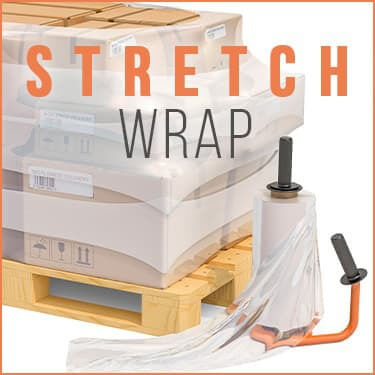
Walmart pallet requirements require that stretch wrap must be used on all palletized shipments. Stretch wrap keeps freight secured and protected from damage when it’s transported. Walmart requires that stretch wrap should have a minimum 80 gauge, 15 inch wrap.
When you start wrapping a pallet, begin at the bottom and work your way up. Make sure that you wrap in an overlapping pattern every 2 to 4 inches as you go. Also, make sure that when you start applying the stretch wrap, do not block forklift entry holes with it.
Some stretch wrap Walmart prohibitions that you should be aware of are:
When stretch wrapping your palletized shipment, you will need to pay close attention to the containment force you use to secure your freight. This is the amount of force used to wrap palletized freight tightly enough to contain it.
The amount of containment force you use can vary based on the type of freight. This force is measured in pounds. The force applied must stay consistent during the entirety of the palletized freight’s journey. Containment force should also be appropriate to the freight itself.
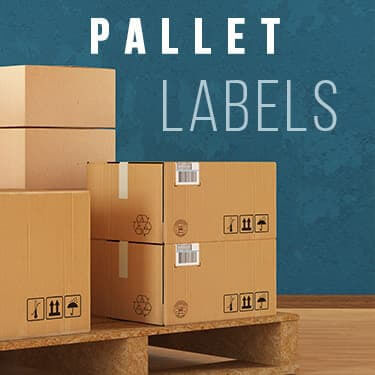
Once your freight is stacked and wrapped, you will then need to put pallet labels on. Walmart requires all palletized shipments to have a pallet label. Unfortunately, Walmart does not provide a template for pallet labels, which means you will have to make your own. When making your pallet label, place following information on it:
These bits of information are required under every circumstance. However, you can include some optional information such as:
All of the information that is included on a pallet label is the same information you would put on the shipping label that goes on boxes and cases of non-palletized freight. If you send a pre-assembled display or a pallet pull to Walmart, you will need to include the 14-digit GTIN on the pallet label as well.
If your palletized shipment is made up of only one type of item, then you will need to include the item number below the purchase order (PO) number on the label. The placement of label on the pallet should be on at least two adjacent sides. The label can be anywhere on the pallet’s sides, but Walmart prefers them to be in the top right-hand corner of the pallet. Lastly, an ITF-14 barcode will be needed in addition to the SSCC-18 barcode already required.
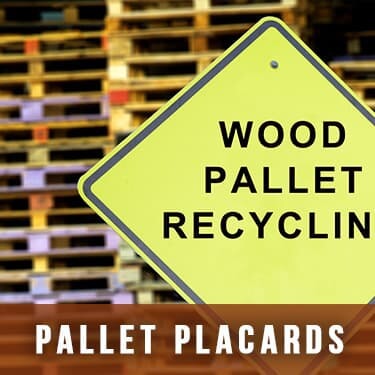
Pallet placards are not always needed, but when they are, they’re not a replacement for a pallet label. The required size that Walmart wants pallet placards are 8.5 by 11 inches. Placards will be required for the following types of pallet shipments:
Placards might be needed for pallet shipments to:
In addition to their size requirements, the lettering on the placard must be large and easy to read. The placement of the placard should also be in the upper middle of the palletized shipment.
Avoiding transit damage is just as important as following pallet requirements. Look into our article on how to reduce transit damage so you can ensure your palletized freight gets to its destination safely.
The best part about Walmart’s pallet requirement is that getting all the items you need won’t break the bank. Our table below shows the amounts of each item you’ll need.
| Items for Palletized Walmart Shipment | Price |
| 40”X48” Pallet | $11.25 - $12.50 |
| 40”X48” Slip Sheets | $38 |
| 40”X48” Tier Sheet | $38 |
| Stretch Wrap | $18 - $22 |
Now that your palletized shipment is ready to be transported, you will need to have the proper documents ready for shipping. The only document that you’re required to have is the BOL. However, you can include a packing list with your palletized shipment as well.
If you choose to include a packing list with your palletized shipment, you need to make sure that the information that you provide in it matches the palletized freight you’re sending. When you send it with palletized freight, put it into a clear plastic envelope. You will then need to attach this envelope to the outside of the last carton of the shipment.
This part of the envelope should be on the side of the pallet facing toward the door of the trailer. If you’re sending multiple pallets you will need a copy of the packing list for each one while using the same guidelines.
Information that should be included in your packing list is:
While packing lists are optional, BOLs are necessary for palletized shipments to Walmart. When you include a BOL, you’ll place it in the same clear envelope on your palletized freight as you would for a packing list.
Your BOL should have the following information about your palletized shipment:
As a seller/supplier to Walmart, the information included in the BOL must be accurate to the palletized shipment itself. For more details on BOLs, look into our article on the 8 common types of bill of lading.
Walmart requires suppliers that send palletized freight to them to fulfill certain responsibilities. These responsibilities include providing insurance for shipped goods, completing any relevant certifications and completing compliance expectations.
Walmart requires suppliers who ship palletized loads to them to provide insurance for their goods. The purpose of insurance is to not only add protection to the freight from damages but to also help address any legal costs that may be incurred for any reason. Walmart will also need the supplier to provide proof of insurance.
Part of doing business is submitting any inspections and tests that they will require you to complete when you send them certain types of products. These inspections and tests will have to be completed according to the guidelines that Walmart gives you.
The following types of products that Walmart creates tests for suppliers to complete include:
To learn more about pallet requirements to other companies, check out our article on Amazon pallet requirements.
If you need logistical help to get your palletized shipment to Walmart, then we have you covered. At USA Truckload, we have a team that’s committed to all of your needs.
Throughout our time performing logistical services, we have met a variety of reliable carriers that help fulfill the transportation needs of our customers. With our network, we’re sure that we can provide you with a driver that will get your palletized shipment to Walmart quickly and efficiently.
Fill out your USA Truckload quote and start transporting your palletized shipments to Walmart.
R+L Global Logistics
315 NE 14th St., Ocala, FL 34470